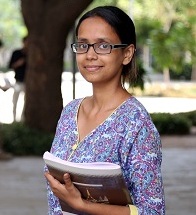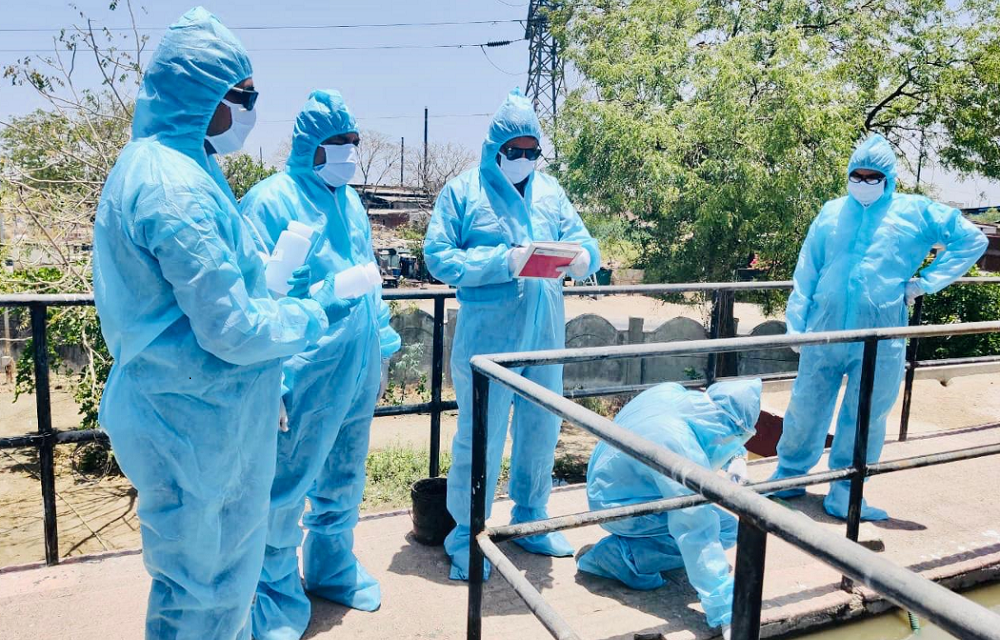“There’s a way to do it better – find it.” — Thomas Alva Edison, renowned inventor, and businessman
Did you know that poop and wastewater can form the basis of some COVID-19 surveillance techniques to monitor the levels of the novel coronavirus circulating in a city? Yes, you heard it right, people!
Researchers from the Indian Institute of Technology Gandhinagar recently became a part of a critical international collaboration on a breakthrough COVID-19 study, which included some of the world’s leading scientists. The objective was to utilize wastewater to indicate the novel coronavirus disease spread in communities of different countries across the globe. Dr. Manish Kumar, a faculty in the Earth Sciences discipline at IITGN, with some other members of his team, is focusing on how this testing can be replicated across a country as thickly populated as India, where individual testing is difficult and a significant amount of different substances are present in wastewater.
Wastewater Surveillance — Why is it Useful?
It can tell you about the situation of a disease. In simple words, by analyzing the wastewater from a locality, we can get to know about the status of genetic load (in this case, genetic material from SARS-CoV-2) and hence, the pandemic infection spree with time. So, basically, if a community is receiving wastewater from, say, 10000 people, we can tell whether the infection in those people is increasing, decreasing, or stable by analyzing results (at regular time intervals) from this type of testing.

“Another out-of-the-box feature is that it is an early warning indicator — a person infected with COVID-19 will start to excrete the virus, at least, 72 hours before showing the symptoms of this disease. Yet another interesting aspect is that since this method is based on detecting the viral genetic material in wastewater, we can also have an estimate from the asymptomatic and undiagnosed patients — detected or not, they would excrete viral particles through feces. All in all, this method is specific, sensitive, and more economical than the individual testing,” explained Prof Manish.
It can be understood better with the following example. Suppose, there are about 100 people living in a building. What would be more feasible — collecting samples from each of them for individual testing or taking one sample from the wastewater coming out of that building? Through wastewater testing, one sample can indicate the situation of all the people living in those premises. Moreover, we can probe answers to various crucial questions such as checking the latest updates on the zones — Is a particular green zone, really green, or has it shifted to become an orange zone in the past few days? And, so forth.
“The answers to all these questions depend on the number of tests performed. For highly populated countries, conducting a large number of individual testing is not an easy task. But, say, if we have four wastewater treatment plants in a particular city, even if there is some leakage in between, still the required sample parameters remain constant every day. In science, this constant nature is all that is needed to determine the relationship between ‘x’ and ‘y’. Hence, wastewater analysis can efficiently inform us about the situation of the pandemic curve over time. Not only this, but such testing can also warn us beforehand, in case there is a chance of subsequent waves of infection,” he stated.
The Unique Aspects
Environmental surveillance (which includes wastewater as well) can be utilized to monitor and control any contagious disease or public health issue. The concept of studying wastewater is not a new field. It is not just limited to gaining insights about the current pandemic but has a wide range of applications. For example, sampling of sewage helped to characterize the epidemiology of poliovirus circulation during India’s polio eradication program and it is still a key method of detecting the poliovirus. Furthermore, wastewater surveillance in Italy proved that the country had COVID-19 patients as early as in December 2019.
In the words of Prof Manish, “Essentially, wastewater analysis can act like a fingerprint — it has been used for getting estimates of diseases and drugs (medicines). In the case of the present pandemic crisis, the only thing that we can do is to effectively identify the infected cases, try to know the places of its spread and be prepared to the maximum possible extent, till the world gets success with its treatment or vaccination. And, this is where our approach comes in very handy, given the level at which it can generate efficient results at the population-scale.”
One of the best parts is that the genetic material of the virus present in wastewater is non-infective. Rather, it is broken down. The scientists look for three specific genes in the sample. SARS-CoV-2 presence is confirmed only when all of them are present. Therefore, almost no worries about the transmission of infection while carrying out this research! Of course, this does not lessen, in any way, the need for wearing all the protective equipment, which were a must at all the stages of this study.
“Our study is the first in India. It is the first proof of the capability of wastewater surveillance of the novel coronavirus disease in the country. We found out that between 20 days or so, the genetic load of the virus in wastewater (from a particular area) increased 10 times and the number of COVID-19 active patients increased by two times.

Of course, the wastewater characteristics differ from country to country. The sewage collection system, geography, and food habits significantly affect this type of study. So, it is not easy to generalize the protocol for all the regions across the globe. Apart from this, the research will also provide insights on important issues such as whether the number of virus particles excreted is similar or different for each country and what is the effect of different weather conditions on the survival rate of this strain of coronavirus, to name a few,” he continued further.
Global Collaboration — The Need of the Hour
This is a global consortium on the wastewater based epidemiology (WBE) of the novel coronavirus disease, led by Kyle James Bibby of the University of Notre Dame (USA) and consists of more than 50 institutes from around the world. With time, the number of people and organizations associated with this research study has increased.
The first thing that this global team is doing is putting all the data and reports that are constantly being generated from this project, on a single platform. This organized information will be helpful in analyzing a lot of things, both short-term and long-term. Say, for example, it will help in comparing and correlating how the increase or decrease in the (wastewater) genetic load of SARS-CoV-2 impacted the number of patients in a particular region/ community.

“Moreover, we have been fortunate in a lot of ways. Globalization was in our favor. We had the Internet. Try to imagine a couple of years before the present time — research collaborations at this scale and scope could not have been possible! Studies like this are helping us understand a lot of things about this novel viral illness on a global level, and this, in turn, is equipping us to face the current as well as future challenges in a much better way,” Prof Manish added. He also expressed how the Gujarat Pollution Control Board helped them in carrying out the sampling during the nationwide lockdown imposed by the Government of India.
The experimental analysis of these samples was carried out by Gujarat Biotechnology Research Center since they had permission from the Indian Council of Medical Research. To sum up, there was good coordination between these government-sector organizations and IITGN, without which this study would have been practically impossible!
— — — — — — — — — — — — — — — — — — — — — — — — — —— — — — — — — — — — — — — — — — — — — — — — — — — —— — — — —
* This story has also been published on Medium. The video of the same is available below.

APEKSHA SRIVASTAVA
Senior Project Associate

